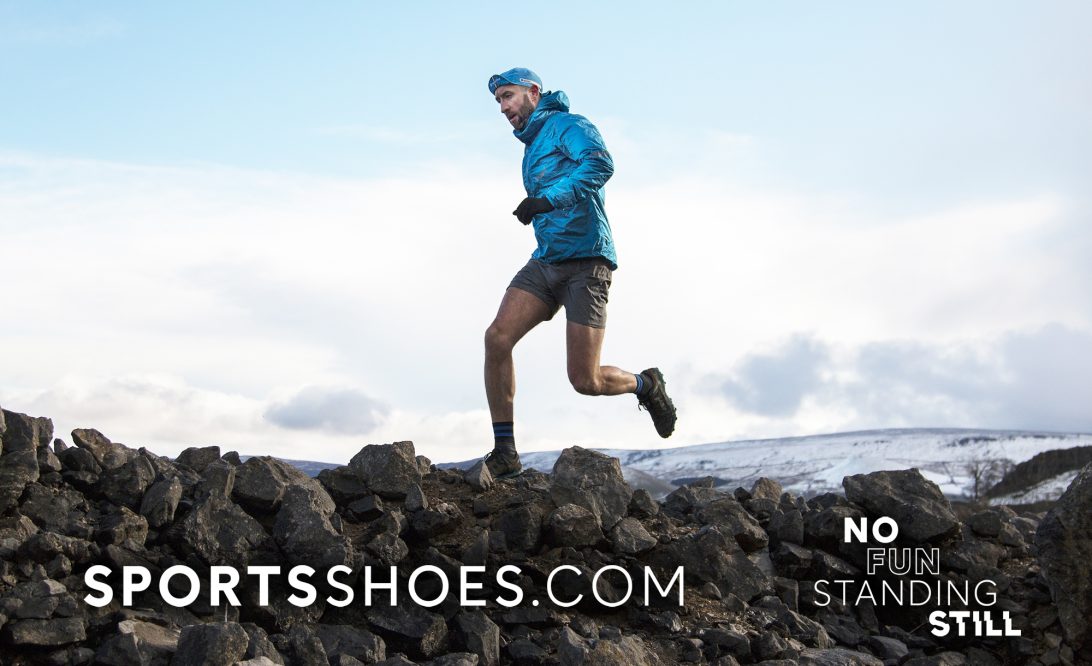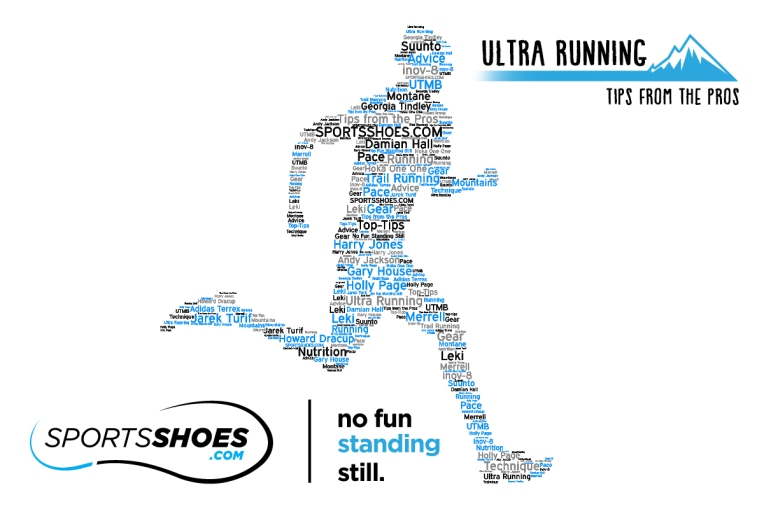
I’d started 2020 with a clear goal in my mind – to take part in my first ultra race. A huge personal challenge, considering my preferred racing distance has always been less than 25km!
My ultra-running journey was due to begin last month, with the ULTRA NORTH in Newcastle, a new 55km ultra-marathon event. Unfortunately, this race has now been postponed until 2021, but at least it will give me more time to train and prepare for the big day.
I’ve been running for most of my life and racing competitively for the last 17 years. During this time, I’ve competed in hundreds of races, visited some amazing countries, ran up and down some spectacular mountains and explored some of the best trails in Europe. But despite all this running experience, the challenge of running an ultra is something completely new to me. It’s also an extremely daunting experience and in all honesty, a little bit scary!
But thankfully I know plenty of ultra-runners and coaches with the necessary experience and expertise that I am lacking. So, I asked them for their best ultra running tips and top kit recommendations and this is what they had to say…
1. HOLLY PAGE
Adidas Terrex Athlete | Skyrunning World Series Champion 2018
FOLLOW HOLLY: Twitter | Instagram
 Photo credit: Adidas
Photo credit: Adidas
1. CARRY SPARE KIT
If you head out on a long run thinking, “I’m cold now but once I start running I’ll get warm”, think how cold you’ll get if you have to stop because you’ve sprained your ankle in the middle of nowhere. You never know when something might happen and having the right equipment to stay warm / dry etc. is really important. There is so much great lightweight kit out there now that there really is no excuse.
HOLLY RECOMMENDS:
ADIDAS TERREX AGRAVIC RAIN WOMEN’S JACKET
ADIDAS TERREX AGRAVIC ALPHA HOODED WOMEN’S JACKET
2. CARRY EMERGENCY FOOD (that you don’t really like!)
Sometimes runs can take longer than you planned so it’s good to always have something in your bag for a “just in case” moment. If you always have a bar / gel that you don’t really like in there then you won’t be tempted to eat it in a “non-emergency” situation too. Carrying extra food when running with others is also a great way to keep yourself popular – a bonking friend will be forever indebted to you for saving them with those “emergency jelly babies”.
3. TAKE A MAP / COMPASS (AND KNOW HOW TO USE THEM!!
Technology has come on leaps and bounds in terms of navigational aid, you can download the GPX of a route onto a watch or phone and follow this to recce a race route / go on a long training run. However, many people are placing too much reliance on following a blue line on a watch. That’s great until the watch malfunctions and you find yourself stranded in the mountains with no idea where you really are or where to go next. You can go on a navigation course, or read up on the basics to gain skills and confidence and then go out and practice!
HOLLY RECOMMENDS:
For shoes, I recommend the ADIDAS TERREX TWO ULTRA PARLEY WOMEN’S TRAIL RUNNING SHOES as they’re really cushioned and comfy – that’s what I’m wearing all the time at the moment. They’re also made out of recycled ocean plastics, which has to be a good thing too!
2. DAMIAN HALL
Inov-8 athlete/Ultra Runner | 5th place UTMB, 2018
FOLLOW DAMIAN: Twitter | Instagram
 Photo credit: inov-8
Photo credit: inov-8
KIT IS KEY!
The number one key piece of kit for ultra runner is shoes. You may be in them for a long time, so they need to be comfy. Yes, terrain is important (will it be rocky, muddy, wet, hard and fast trails, a mixture?), but above all that you want to treat your pinkies like they’re royalty – else they’ll rebel and give you blisters. Everyone’s feet are different, so don’t listen too much to what works for others. Instead get a pair early and try them out on your long runs to see how well they suit you.
DAMIAN RECOMMENDS:
For UTMB, inov-8 TRAILTALONS and TERRAULTRA Gs have both been excellent for me. I want some cushioning for 100 miles, but not too much (I want to feel dextrous on technical bits) and both of these have a roomy toebox for when grumpy feet start to expand a little. No blisters. No complaints. And ace grip, to boot.
Most ultras have a mandatory kit list so you’ll need a pack to carry that in, plus your sandwiches. INOV-8 RACE ULTRA PRO 2IN1 Vest was brill for me at UTMB in 2018 and numerous races and challenges since. Again, comfort is really important as you might be wearing it for 24 hours-plus. Key for me is the side pouches as I want to be able to access kit (gloves, sunglasses, waterproof) and my sandwiches on the move, without ever having to take the pack off. Plus the water-carrying options are great, with different carrying options for soft flasks (or a bladder). And there are several options for pole attachments too. It’s a really versatile pack – not least the option to detach the main compartment when you only need minimal kit.
Most ultras (and indeed fell races) will have a waterproof as mandatory kit, even when often there’s very little chance it’ll get used. So lightest is best. INOV-8’S ULTRASHELL meets all the strict race criteria for UTMB and other races, and weighs a stunning 97g. Being transparent you can still read the race number through it, too – another race rule. I’ll also take the excellently named ULTRAPANT, which are just 86g. I don’t know of a lighter combination of full body waterproof cover. If the forecast is for a monsoon however, I’ll plump for the STORMSHELL. I wore this in 2017 and 2018 UTMBs and on a recent Winter Paddy Buckley Round and it’s been well skill. For just 170g you get excellent protection around the head, neck and wrists.
Inadequate headtorch beam could mean topographical befuddlement or, worse still, a trip or fall. The Petzl NAO+ boasts a whopping 750 lumens, but can be customised in an app to last all night (with fewer lumens). I’ve used this for several UTMBs, plus longer runs in the dark, such as the 230-mile Cape Wrath trail. Excellent, reliable bit of kit.
This watch can record GPS for up to 120 hours, which is great for FKTs. Being able to follow a race or route’s GPX file can also save a lot of bother/confusion, it has wrist HR (to help guard against overtraining), you can get smartphone notifications if you really want them (I don’t).
3. HOWARD DRACUP
Montane Athlete | 3rd place in the Montane Spine Challenger 2018
FOLLOW HOWARD: Instagram
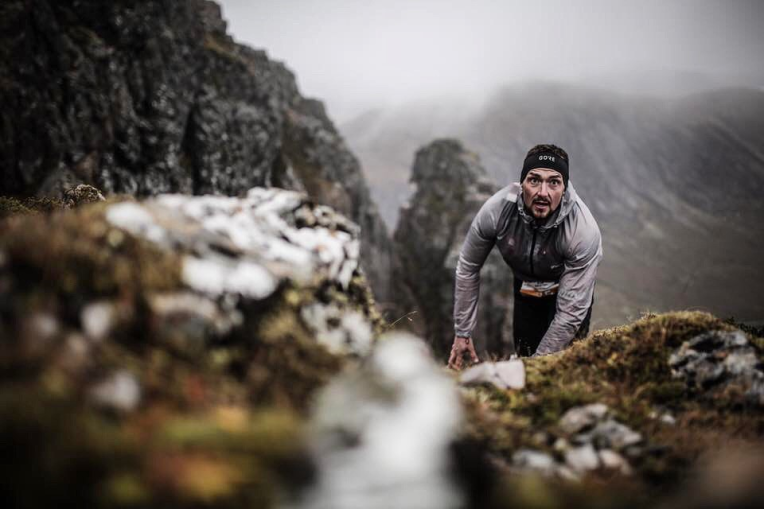 Photo credit: Philipp Reiter
Photo credit: Philipp Reiter
FAIL TO PREPARE, PREPARE TO FAIL
Planning & preparation before a long distance race is absolute vital to success. Especially for distances of 100 miles and above. In the weeks and months leading up to the race, I recce all, or as much of the route as possible (in sections). This helps me to understand things like what terrain I will be running on, what shoes and kit I will need and most importantly where the race goes. Then I sit down with a note pad & pen! I close my eyes, visualise it and try and run the whole race in my head – I get into its mind!
I’ll start with how long I think it’s going to take me on a good day & a bad day…I break it down into legs/sections. I ask myself questions like – are there any aid stations? How far apart are they? Am I allowed support/able to use drop bags, how much food, water & electrolytes do I need to carry to get to the next supply point?
Time spent at checkpoints needs to be as fluid as possible. You want your next lot of Energy/kit ready to grab and go without any faffing. I put mine into clear ziplock bags and label it CP1 for example, and make sure my dropbags are organised.
By constantly familiarising myself with the route and planning, it means that on the day I know exactly what I’m doing & where everything needs to be.
By preparing in advance it gives me more confidence on race day and puts me under less stress before and during the race- especially if your travelling abroad! I also do the same with my kit choices.
HOWARD RECOMMENDS:
The Montane Gecko Vest was my most used race vest last year, I love it! It’s remarkably comfortable and extremely breathable – perfect for running ultra-distances.
I used my “Montane Prism Mitts” a hell of a lot this winter. I prefer mitts to gloves as they keep my hands a lot warmer and revive them if they’ve gone too cold & wet!
4. GEORGIA TINDLEY
Merrell Athlete | Team GB Long Distance Mountain Runner
FOLLOW GEORGIA: Instagram
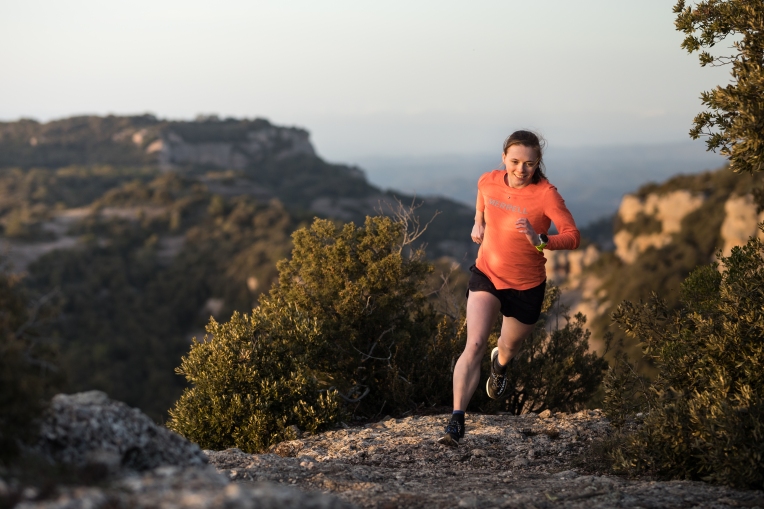 Photo credit: Merrell
Photo credit: Merrell
1. TRAINING FOR TECHNICAL RUNNING
If you’re one of these people foolish enough to not only sign up for an ultra, but who decided to make it a technical and exhausting skyrunning style ultra then heed this advice. Train on technical terrain. Prepare for technical terrain. Adapt to technical terrain. Moving over ridges, rocks and scree is both mentally and physically exhausting and will take it out of you far more than running on a lovely smooth trail. It will also require a different style of movement and use different muscles; incorporate some scrambling and strength work into your training (or limp across the finish line!).
2. DON’T START TOO FAST
It’s the classic piece of advice for ultra running for a reason: everyone knows it, and everyone has done it anyway. In the excitement of the start line it is easy to get carried away, especially if you’re used to running shorter, faster races. No matter how good you feel at the start of an ultra there will come a time when you feel awful. If you start too fast this rough patch is going to come sooner and last longer! If I’m feeling unexpectedly fresh and springy at the start of a race I remind myself that it’ll make a bigger difference to be able to push hard at the end than to keep pace with my competitors at the beginning.
3. DON’T PAY ATTENTION TO OTHER COMPETITORS
It’s easy to get psyched out before a race when you start chatting to your competitors. How much water are you carrying? Are you eating gels or solid food? Do you think it is t-shirt weather? Where are you going to push hard? But making changes just before the race, no matter how small they seem, can totally unravel you. It’s important that you work out what works for you during training, and stick to it in the race. Maybe carrying 500ml less water in a race of a couple of hours wouldn’t make that much difference, but over the course of an ultra that could be litres less that you manage to consume.
GEORGIA RECOMMENDS:
MERRELL MTL LONG SKY TRAIL RUNNING SHOES
This year Merrell are the lead sponsor for the Skyrunning World Series and have put together a team of international runners to showcase their range of new skyrunning specific shoes. This includes the Merrell Long Sky running shoes, which are specifically designed to provide both grip and support in grueling ultras. If you fancy something a bit lighter, the SKYFIRE is a great all round shoe and easily robust enough to take on ultra distances.
5. ANDY JACKSON
Experienced Ultra Runner | UTMB finisher
FOLLOW ANDY: Instagram
 Photo credit: Rachel Platt
Photo credit: Rachel Platt
1. TRAIN YOUR BRAIN
Having a strong mind really does help. For me, a lot of training has being solo, getting out in the mountains in any weather. This has helped me to become stronger, both mentally and physical. Essentially practice, as in long ultra races you often have to run through the night and also alone.
2. BUY THE BEST KIT
Buying and using the correct kit is also absolutely essential. I often read advice on internet forums advising people to buy the cheapest clothing and equipment just to get through a kit check. In reality, when you’re racing in the cold dead of night, sometimes at high altitude, with a tired body, fatigued brain, whilst battling inclement weather, you’ll be glad you spent that extra bit of money on good quality gear.
ANDY RECOMMENDS:
INOV8 TERRAULTRA G260 TRAIL RUNNING SHOES
My favourite shoes are the inov8 TerraUltra G 260, having worn them to complete the Bob Graham, Lakeland 50/100, Fellsman and more recently the PTL (300km 26000 meters of climbing on mixed terrain. These shoes to me are the best all-rounder multi-terrain shoe proving excellent comfort and grip. The addition of graphene in the rubber soles also prolongs the life of the shoe, making them the perfect choice for all ultra-running distances.
LEKI MICRO TRAIL PRO TRAIL RUNNING POLE
Poles are an absolute essential for ultra-races in mountainous environments! Using these on long races like the ‘Spine Challenger’ and the PTL whilst carrying a 20 litre pack with all the mandatory kit certainly help on the climbs, keeping the body upright and also gives tired knees support on long descents. The poles I use are the Leki Micro Trail Pro’s.
6. HARRY JONES
Hoka One One athlete/coach | 4th place Transvulcania 2020 | http://www.harryruns.com
FOLLOW HARRY: Instagram
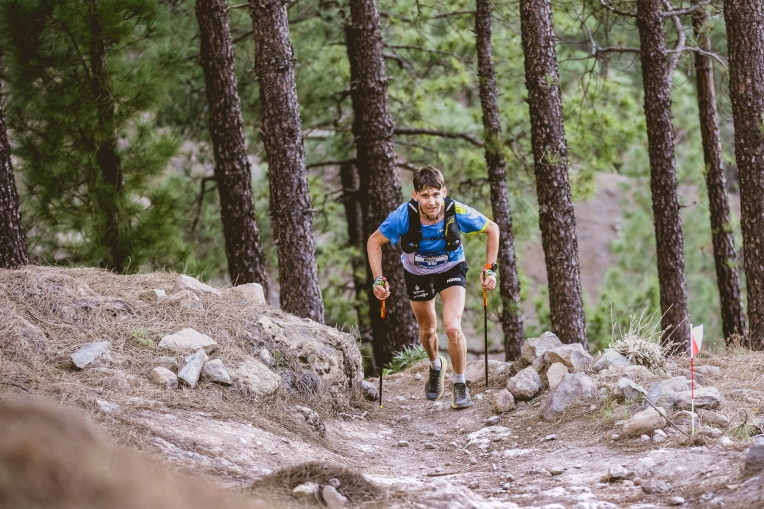 Photo credit: Transgrancanaria 128km official race photography
Photo credit: Transgrancanaria 128km official race photography
1. BUILD UP SLOWLY
First and foremost, the allure of running your first ultra is strong. But make sure you are patient, if you’re new to ultra running, don’t just go from a road marathon straight into your first 100km on the trails. Take your time to build up your training safely to a volume you could only have dreamt of before you started your ultra journey. Take your time to get to a place where 3 hour runs start to feel short compared to some epics you’ve had in your training block. Most importantly, take your time to enjoy the process and get excited for race day.
If trails are new to you get some shorter trail races in first. Get out in the mountains, figure out what you’re good at, what needs work and how much slower and longer those big hills and tough terrain can make the miles drag.
2. STRUCTURE IS KEY
Don’t neglect structured workouts. It’s easy to think ‘I’ve got a 100km race with 6,000m of climbing, so I should just focus all my time on vertical, volume and running in the mountains’. It will definitely help, but don’t underestimate how beneficial building your overall running fitness can be, whether that be with hill intervals or track workouts. I do a lot of volume and time in the mountains coming into big goal races, but always make sure I still feel like I’m within a strong road marathon fitness, maintaining some good structured workouts at pace. There might be a lot of hiking in a steep ultra but often there’s a lot of running too and that’s where you really make up time.
3. MAKE THE RIGHT CHOICE
Make sure you choose the right race for you. Don’t just enter the first race you find, make sure it’s a race, route and area that excites and motivates you. It will help keep the miles flying by and when you hit a rough patch (if you’re doing it right you will) you just have to look up from the trail, take in the views and the energy will start to come back.
HARRY RECOMMENDS:
HOKA SPEEDGOAT 4 TRAIL RUNNING SHOES
Great cushioning, traction and ride for a long day out on the trails. I’ve always been a fan of the Speedgoat and have raced everything from fast 21km trail races, all the way up to long ultras in them. This will be my shoe of choice for UTMB this year.
I’ve tried a wide range of different hydration vests to find the best fit and functionality for race day. Camelbak Ultra Pro ticks all those boxes, lightweight with good access to pockets whilst still having enough volume to fit mandatory gear for a race like UTMB.
LEKI MICRO TRAIL PRO TRAIL RUNNING POLE
Not essential for every ultra, but when you’ve got plenty of steep climbing poles can really help take some strain off the legs and get you through the course faster. The Leki trigger shark system allows you to click in out of your poles quickly and gives good energy return when you’re hiking up those mountains.
7. GARY HOUSE
Competitive Ultra Runner & Coach | www.therunstrongclub.com
FOLLOW GARY: Instagram
 Photo credit: The Dragon’s Back official race photography
Photo credit: The Dragon’s Back official race photography
1. STOP STRETCHING & GET STRENGTHENING
Some still see it as controversial but it’s really not – there is enough evidence to confidently support the notion that if more people worked on being a stronger runner rather than a flexible one, there would be a lot less injuries. When you think about it, why would you need to be that flexible? Tying your shoe-laces or getting over a style maybe, but that’s it. Out of the thousands of runners I’ve coached, those that I have switched out stretches for strength work have seen nothing but positive results.
My BIG 5 are: Deadlift, Split Squat, Hip Thrust, Weighted Calf Raises. Single Leg Press / Lunges.
2. HAVE A RUNSTOPPABLE MINDSET
Running an Ultra means that you will spend a lot of time with only your own thoughts to motivate you both in training and on race day, so it’s very important to strengthen your mind. Most plan races as if it’s going to be the perfect day, but it never is! Work on things that could go wrong in the race, so it’s easier to problem solve when you’re tired.
The first step is to realise that there are both intrinsic (challenge, role model, build confidence) and extrinsic factors (medals / t-shirts / profile pictures)..…. you need solid reasons to train when its freezing, dark, wet or all three! – as humans we are hard wired to overcome and persevere, but you have to sometimes rediscover and practice it so that you are prepared on race day for the tough times.
3. DON’T LEAVE IT TOO LATE
a) Walk before you need to walk
b) Eat before you need to eat
c) Drink before you need to drink
d) S**t before you s**t your pants
8. JAREK TURIF
Ultra Runner | Winner of the 10 Peaks Brecon Beacons Ultra 89km, 2019
FOLLOW JAREK: Instagram
 Photo credit: Kong Adventure
Photo credit: Kong Adventure
1. CONSISTENCY IS THE KEY
When preparing for an Ultramarathon, think of your training with a perspective of short, medium and long term goals. Do you have a specific area of weakness that you want to improve? Are you hoping to improve a personal best? Or perhaps you are recovering from an injury? Apply a perspective to your training plan in order to consistently build your form whilst maintaining physical and mental well-being.
We are all at fault for wanting to run more. Running more does not always mean running better!
2. CELEBRATE
Unless your name is Pau, Xavier or Kilian you are unlikely to stand on the podium of an International race, and as much as we like competition and racing, concentrate on what you do well and remind yourself what contributed to that success? Perhaps you managed to get out the door when it was pouring with rain outside, your training partner finished his/her first ultra or you feel the first rays of spring sunshine on your face. There are million reasons to celebrate running!
3. REST/TAPER
Think of all the months and years of preparation. All of the sacrifices of waking up early, declining the second helping of carrot cake (my favourite) and the hours spent on your feet. For your main races in the calendar, allow yourself to rest and absorb the training impact. Personally I have been following the 70/50/30 rule. This is the overall percentage of total running volume for each of the weeks before the race. Remember, It is always better to be slightly undertrained and rearing to run than over trained and too tired on the big day.
If you enjoyed reading this blog, please LIKE & SHARE on social media.
Facebook | Twitter | Strava | Instagram
Supported by Sportsshoes | Mountain Fuel | Suunto | inov-8 | Comfyballs | Strava


